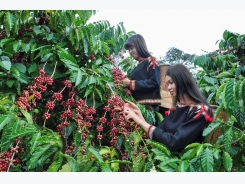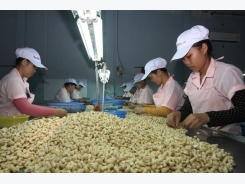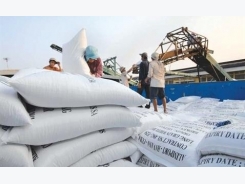Vietnam seeks to restrain fruit, vegetable imports

Fruit and vegetables have become one of Vietnam’s key exports in the agriculture, forestry and fishery group with an average growth of 30 percent per month. However, Vietnam also imports a large volume of fruit and vegetables, including some that are domestically produced.
According to the General Department of Vietnam Customs, fruit and vegetable imports reached US$924.9 million in 2016, an increase of 47.2 percent compared to 2015. This figure stood at US$405 million in the first five months of this year, and is forecast to exceed US$1 billion this year. Thailand continues to be the largest fruit and vegetable supplier to Vietnam, accounting for more than 50 percent of total import turnover, followed by China with 19 percent, the US with 6.7 percent and Myanmar with 4.5 percent.
While consumers in rural and remote areas buy Chinese fruit and vegetables at cheap prices, those in large cities mainly select imported fruit from the US, Japan, the Republic of Korea, Thailand and Australia. In particular, imported fruit from Thailand is increasingly engaging the attention of Vietnamese consumers due to good prices and guaranteed quality.
Le Quoc Phuong, deputy director of the Ministry of Industry and Trade’s Vietnam Industry and Trade Information Center, says Vietnam is participating in the international economic integration process. Therefore, other countries are able to export their goods to Vietnam. In addition, Vietnam still imports some kinds of fruit and vegetables that the country is unable to produce.
A strong growth in fruit and vegetable imports is partly due to the quality of domestically produced goods. Some use of chemical substances on fruit has made consumers anxious, while branding remains limited.
Deputy Minister of Industry and Trade Do Thang Hai says the ministry will promote the Buy Vietnamese Goods campaign so that consumers will increasingly give priority to domestically produced goods, including fruit and vegetables.
Businesses need to see the domestic market as an important market for high-quality goods, instead of giving priority to exports. Le Quoc Phuong says businesses should also invest more in high-tech agriculture to produce clean products.
The state, ministries and departments should formulate policies to support businesses. In addition, fairs, exhibitions and other trade promotion activities should be undertaken to introduce Vietnamese fruit and vegetables to consumers.
The main imported fruit and vegetables to Vietnam consist of New Zealand and Australia’s apples, oranges, pears, kiwi, cherries and grapes; Thailand’s durian,mangos and Siamese custard apples; China’s cabbages, potatoes and oranges.
Có thể bạn quan tâm
Phần mềm

Phối trộn thức ăn chăn nuôi

Pha dung dịch thủy canh

Định mức cho tôm ăn

Phối trộn phân bón NPK

Xác định tỷ lệ tôm sống

Chuyển đổi đơn vị phân bón

Xác định công suất sục khí

Chuyển đổi đơn vị tôm

Tính diện tích nhà kính

Tính thể tích ao hồ



 Vietnam to import more cashew
Vietnam to import more cashew  Where’s Vietnam in the global value chain?
Where’s Vietnam in the global value chain?